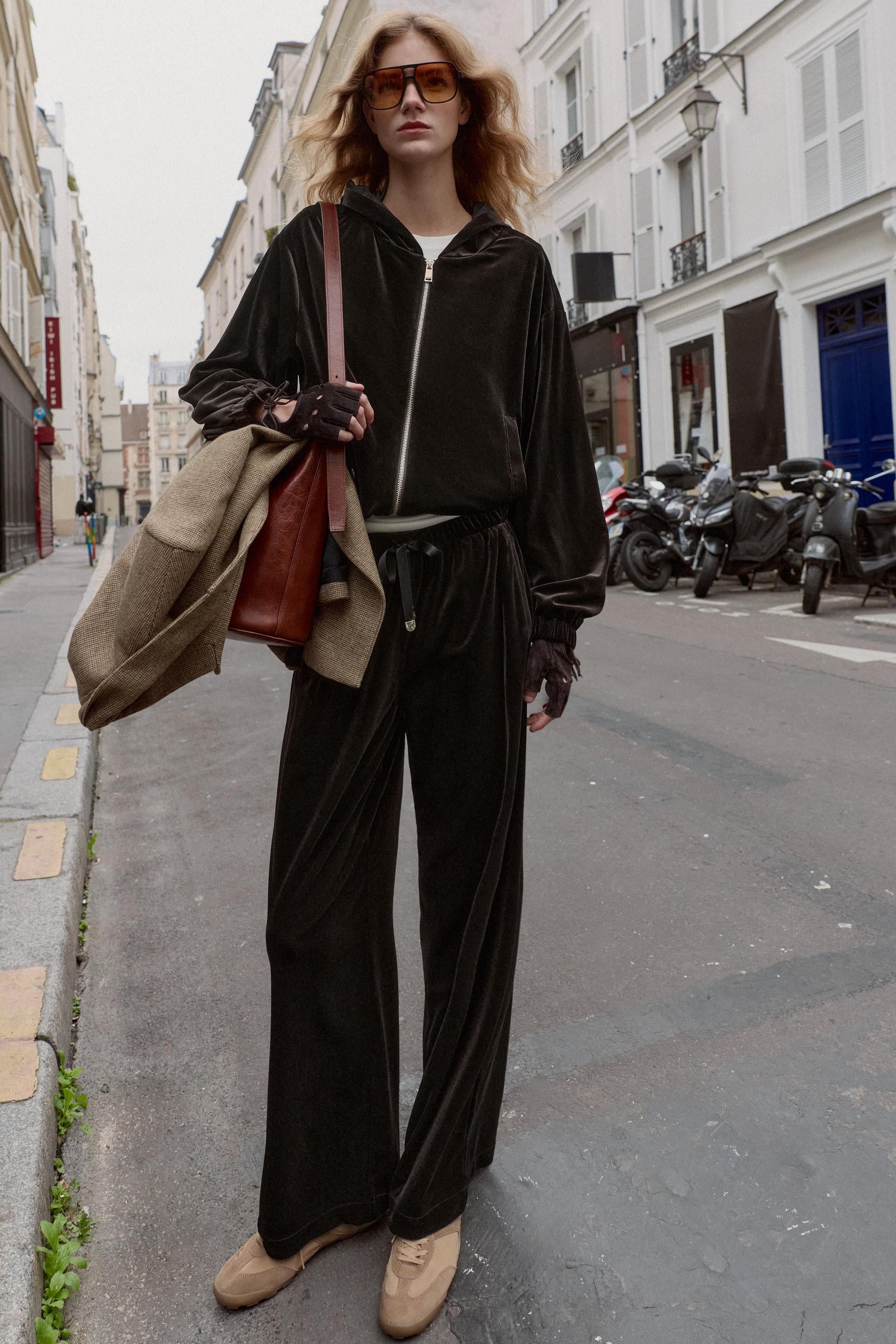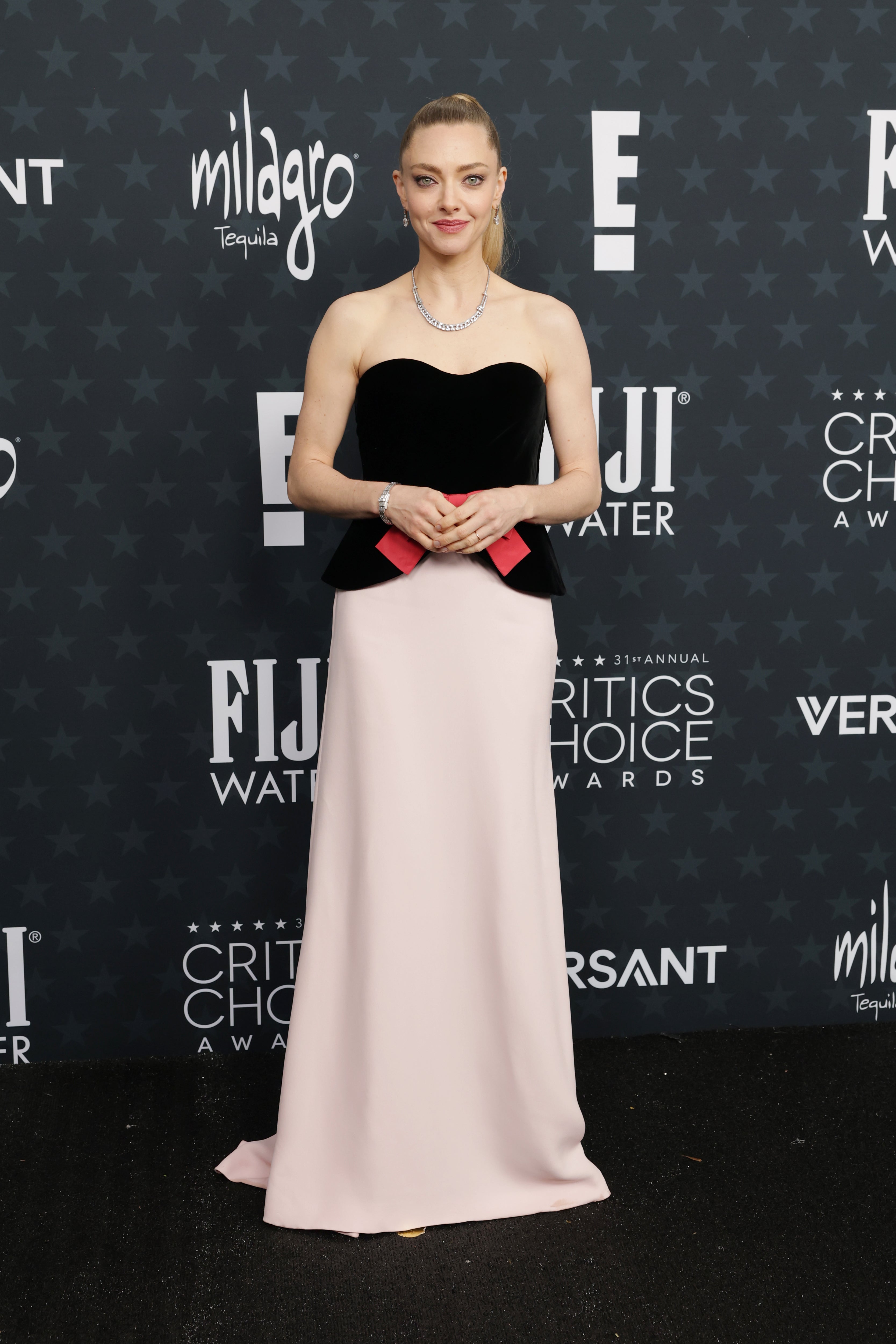
Before the boom of ready-to-wear fashion, every piece of clothing someone owned was made for the individual, either themselves or by someone they knew. Now, around 30 years after fast fashion began taking hold, we don’t know who delivered our dress to store, let alone who made it. The facelessness of this model allows us to brush aside our concern over the ethics of the production line – out of sight, out of mind! – while the merry-go-round of trends combined with the addictive serotonin hit of social media has us trapped in a never-ending cycle of buying more, quickly, now.
Purchasing a new-season piece is as easy as click-click-checkout – enabled further by next-day delivery – but a growing number of women are rallying against this dehumanized and detached fashion model. These women have learned to make their own clothes, and in doing so, have altered their perspective on everything from the importance of community to the tricks of advertising campaigns. Digital magazine service Readly revealed that out of 5,000 titles, with more than 83 million issues read globally in 2019, the most-searched-for topic was needlework craft, with knitting, crochet, and sewing also being featured in the top five trends.
While we should be wary of the jingoistic ‘make do and mend‘ mentality, which often overlooks the complex psychological impact of platforms like Instagram, as well as the economic and time privileges that sustainable fashion demands, young women are clearly turning to traditional craft as an antidote to fashion’s current, highly problematic state. With an upswing in the popularity of buying and tailoring vintage, and Pinterest reporting a 30% rise in searches for ‘how to make clothes’, it’s apparent that a DIY ethos is back en vogue. Equal parts mindfulness, activism, and creativity, it’s joyful resistance and sartorial originality all rolled into one.
Three women who make their own clothes invited us into their workspaces to discuss getting started (hint: baby steps!), the best fabric markets, and how, once you start sewing, your relationship with fashion changes forever.
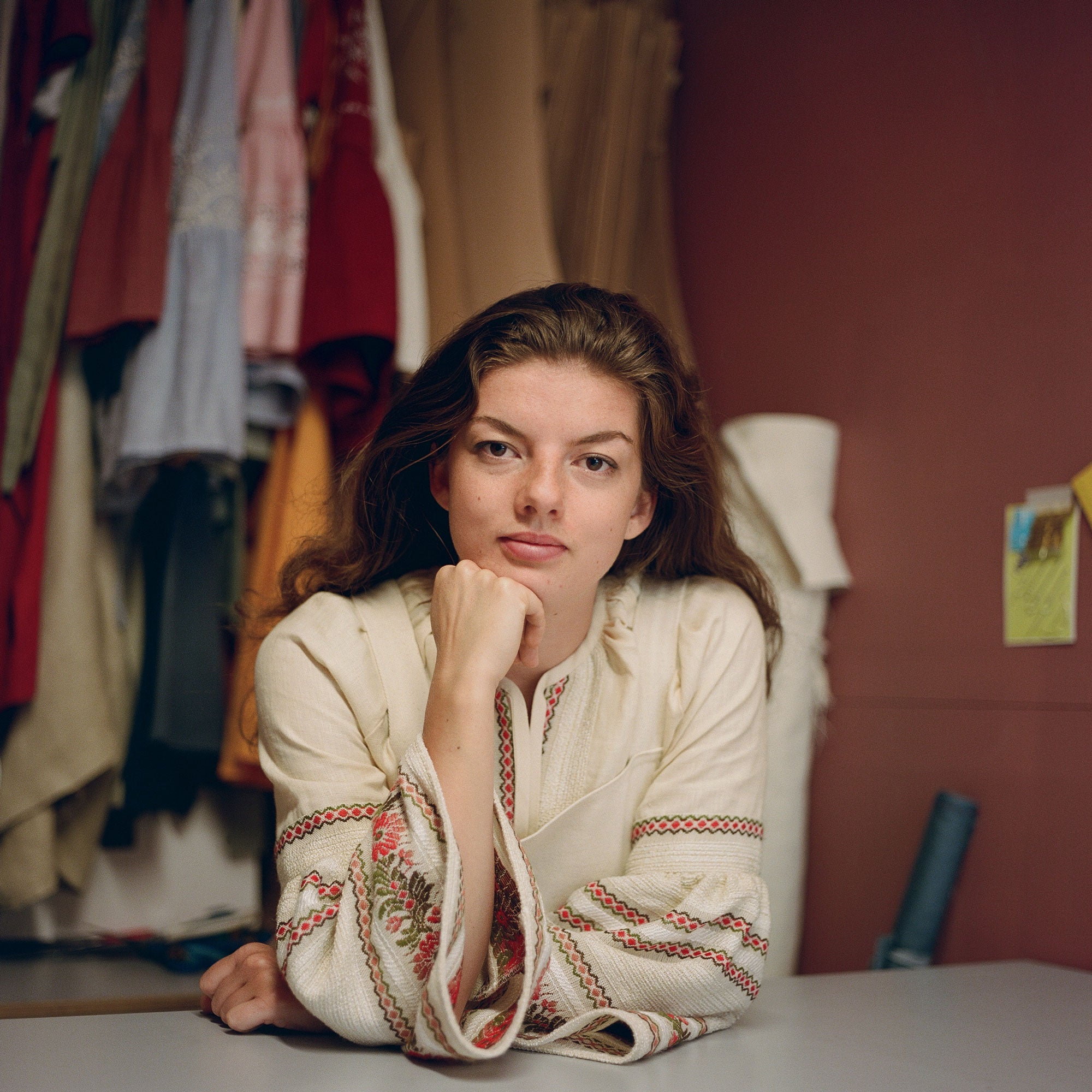
Lydia Higginson
“My mum taught me to sew when I was a little girl but I used to get frustrated with her because I wanted to make all these elaborate things and she’d say: ‘No, we’re going to start from the beginning.’ She made our clothes when we were small, but I’m the youngest of five, so by the time she got to me she was pretty busy. I learned the basics from Mom, but instead of pursuing a degree in textiles, I studied politics, but realized pretty quickly I’d never want to work in that world. I had bad depression and anxiety, and that was when I really got into sewing – I’d lock myself away for hours on end and it really calmed my mind.
One day I was looking through the window of Prangsta Costumiers in south London and the manager at the time asked if I wanted to come in. She was lovely, so I applied for an apprenticeship there. She started me on a week’s internship and it turned into two years. It was a baptism of fire because they were known for their really complex commissions, from huge showgirl headdresses with feathers to corsets and top hats. I learned to make men’s shirts, create embellishments and embroidery, and how to put a costume together. Learning to dress someone is an art form.
After the apprenticeship finished, I moved from London to Bristol to freelance as a costume designer. I landed on my feet when I found an amazing studio called the Bristol Textile Quarter: 10 fashion and textile artists working together in one big room, sharing industrial machines and cutting tables. I realized that there was a real disconnect between what I did for a living and the way I dress myself; I was making clothes for other people but still wearing leggings from the high street. I didn’t feel good wearing these clothes or going into these shops, so I decided to make my entire wardrobe with the shortest supply chain in the world – made and worn by me!
I started on 1st January 2016 and to stop myself breaking my New Year’s resolution, I created my blog, Made My Wardrobe, as a declaration. I began with a bra and pants because that’s the first thing you put on in the morning. They weren’t perfect but they were beautiful in their own way. Next was a coat, then trousers and a jumper and shirt, and so on. In the first month, I’d made a complete outfit. I wasn’t regimented, I just did what I could in evenings and weekends between work. I gradually gave away the high street clothes I had until December 31st, when everything went to the charity shop and I had made 75 of my own pieces. Since then, I’ve only made things I need – like a bikini for a holiday or a dress for a wedding – as I don’t like to make things for the sake of it. What’s cool is that when the seasons change, I can make adjustments to what I already have, like taking sleeves off in summer and putting them back on in winter.
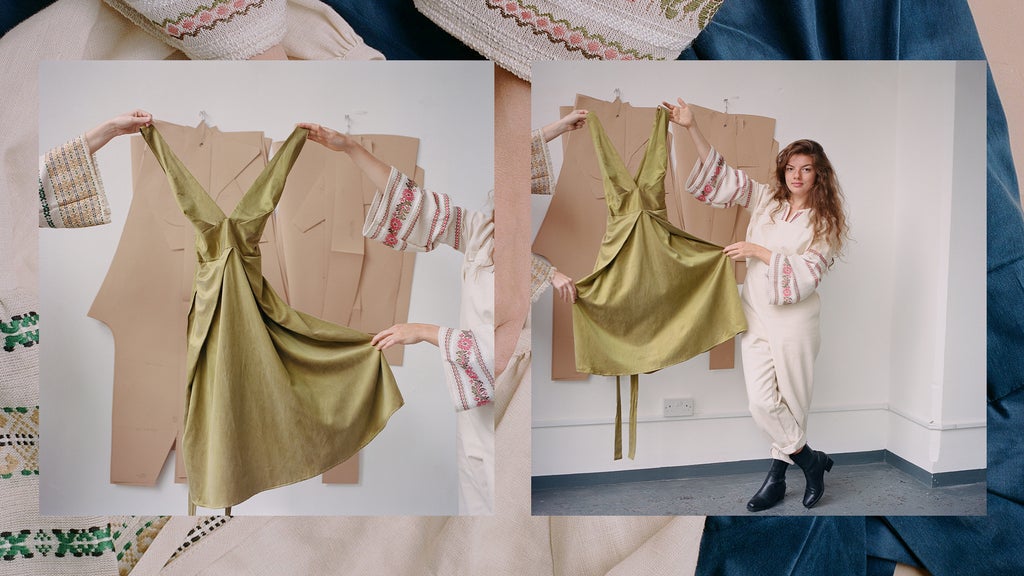
When you have a better understanding of how the things you own are made, you have so much more respect for them. Even if you only make one pair of jeans, the next time you go to buy a pair you’ll think so much harder about the work and care that went into that product. My studio is a stone’s throw from Oxford Street and knowing I don’t need anything from there is really liberating. It’s made me look at other areas of my life, too: can I build my own bed? My own kitchen table? Being self-sufficient is a really good feeling.
I’ve also gained a sense of community from this. I learned so many of my skills from other people, like swimwear from Claire Stidston and shoemaking from Lucy and Olly from Ottowin. That’s the part that most excites me – skill sharing – and I never want to lose that. Since finishing the year of making my own wardrobe, so many people got in touch saying they wanted to learn to make pieces, so I’ve been running workshops for the last three years. I now sell digitized patterns and run online workshops so that people can make the pieces using locally sourced fabrics. There’s an amazing project, Fibershed, which is all about closed-loop fabric production; another, Bristol Cloth, sells wool from local sheep which is botanically dyed by a local micro-mill, so I can make a coat out of this beautiful fabric that’s only traveled two hours by train.
I struggle with the knowledge that privilege plays a part in making clothes but as an artist living and working in London, I can’t make my workshops any cheaper. I do a lot of work with charities, from Tender, an arts charity which aims to end sexual abuse, and Fine Cell Work, which teaches the incarcerated fine needlework, to Off The Record, a mental health youth charity. For those who have never made anything before but want to get started, I’d begin with borrowing a sewing machine, buying a pattern and some cheap fabric and getting stuck in. If you ask around, I guarantee someone’s mum or auntie will have a sewing machine in their loft and as they range from £100 to £1,000, you want to go secondhand first. If you’re in London, my go-to is an amazing guy called Tony in Tufnell Park who has an incredible secondhand sewing machine shop. I am scared for when he retires because he services all my machines – he’s so knowledgeable and kind.
For fabric, Goldhawk Road market and MacCulloch & Wallis on Poland Street are great, and online I like Offset Warehouse. You’ll make mistakes along the way but you can’t go that wrong – at most, you’ll have to unpick it while sitting in front of Netflix! Patterns from my favorite indie brands cost between £10 and £15 but then you’ve got the pattern to make not only yourself a pair of overalls but your best friend, your mom, your sister… And once you’re proficient, you can hack the pattern to make overall dresses or trousers. In nearly every workshop I run, someone tells me about a textiles teacher who killed their confidence but I say anyone and everyone can do it.”
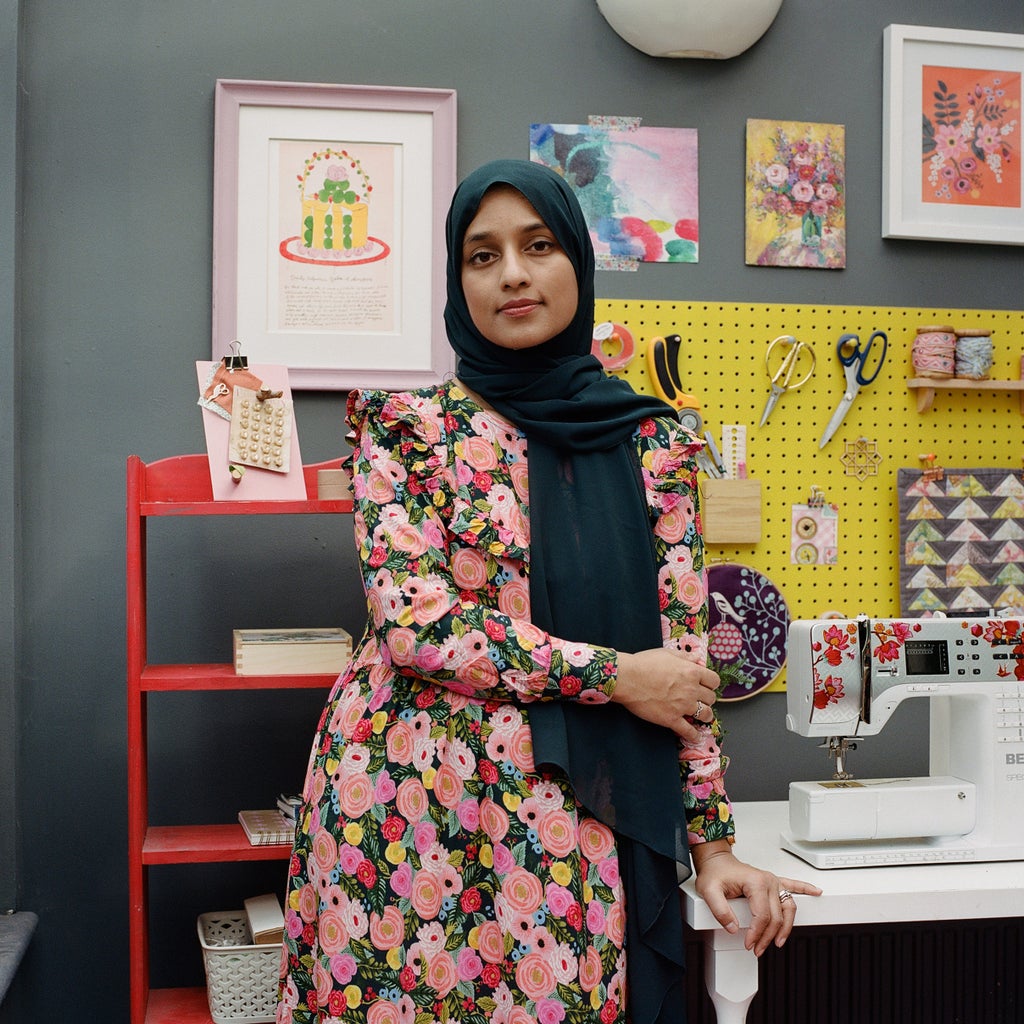
Atia Azmi
“My mom made our clothes for special occasions; I’m one of four and she’d use the same fabric to make different styles for us all. My dad also worked in the garment industry in Manchester and had his own knitwear business so seeing people sewing was totally normal for us, but I never learned to sew from my parents. I enjoyed cross-stitch and embroidery from age 8 or 9, and I did textiles at GCSE, but I didn’t pick it up again until after university, where I trained to be a GP. After I finished my initial junior doctor hospital training, I thought I’d like to sew again and began mostly making small quilts – I got very into knitting – and from there I decided to learn more about making my own clothes.
As a junior doctor doing shift work, I actually had lots of time – work is either completely full-on or you have a whole day free after a night shift. The freedom and creativity I got from sewing was such a nice change from the way I worked in medicine, where there’s very much a right and wrong answer. I developed skills that I couldn’t have done now that I have children. I always tell people who are trying to learn when they have kids or a full-time job that you can’t expect to suddenly know everything – it takes time. It can be frustrating when you feel you can’t find the time but I realized that you’ll never find the time if you keep saying: ‘I’ll get everything else in life done first, then I’ll start.’
Now, our conservatory is my sewing room. One thing you don’t realize when you start out is how much you’ll accumulate! For material, I love Simply Fabrics in Brixton, The New Craft House, and Fabworks. How much I make varies; last year on average I made something new every week. A complex piece like a coat would take several [weeks]but I could make two or three skirts or tops a week. At this stage, I’m conscious if I don’t need anything so I’m more focused on new skills I want to learn or something that’s more creatively inspiring, like using new fabric. I’d say two-thirds of my wardrobe are things I’ve made; it feels strange to wear something I haven’t now. I really enjoy making things for my daughter, and from a sustainability aspect, children’s clothes tend to be poorly made and in bad materials.
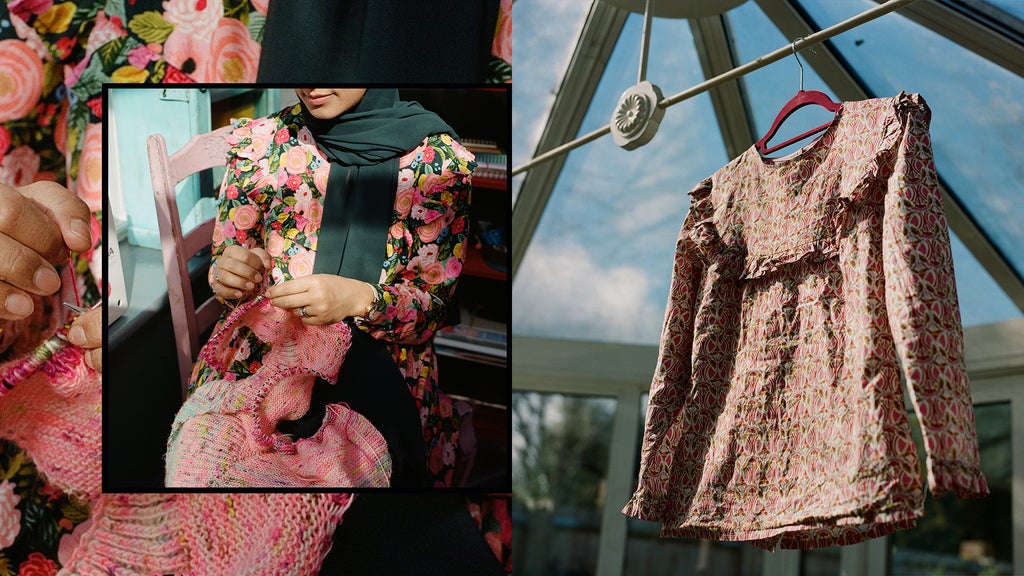
Making my own clothes has changed how I view fashion. When I go to the high street, all I can see is that there are too many clothes – such huge numbers, it’s quite overwhelming. All of those pieces have been made by somebody and will probably only be worn a handful of times. Once you know firsthand all the time that went into that garment, how long you’ll wear it for becomes so important. I spend so much less on clothes now; when I do buy something it’s only occasionally and I can afford for it to be different or special, which is nice. Because I’m a Muslim woman who wears hijabs, a lot of people assume that I sew because I can’t find what I want to wear. While that is not the case – there are lots of options for modest dressing – I do sew because I can’t find what I want to wear, but only because I’m petite and love Scandinavian style. You can’t always find those pieces in small sizes so I make clothes that are tailored to my preferences.
I’d advise people starting out to just build it into your day; maybe cut out your pattern one day, then thread your machine the next. Eventually, you’ll get to the point where you can finish a garment in a week or two, small steps at a time. Start off simple. Instagram is great for challenges to help with this – I used to do one called Kids Clothes Week, where you spend 30 minutes a day making something, and the community aspect really motivated me. There are YouTube tutorials on everything from how to put in zips to using particular sewing machines, and tags on Instagram like #beginnersewing or #indiepatterns are great for contacting people who are working on the same pieces as you, who managed to solve a problem you’re stuck on. Because you sew alone, it’s easy to feel isolated and get stuck on something but there really is a whole community out there.”
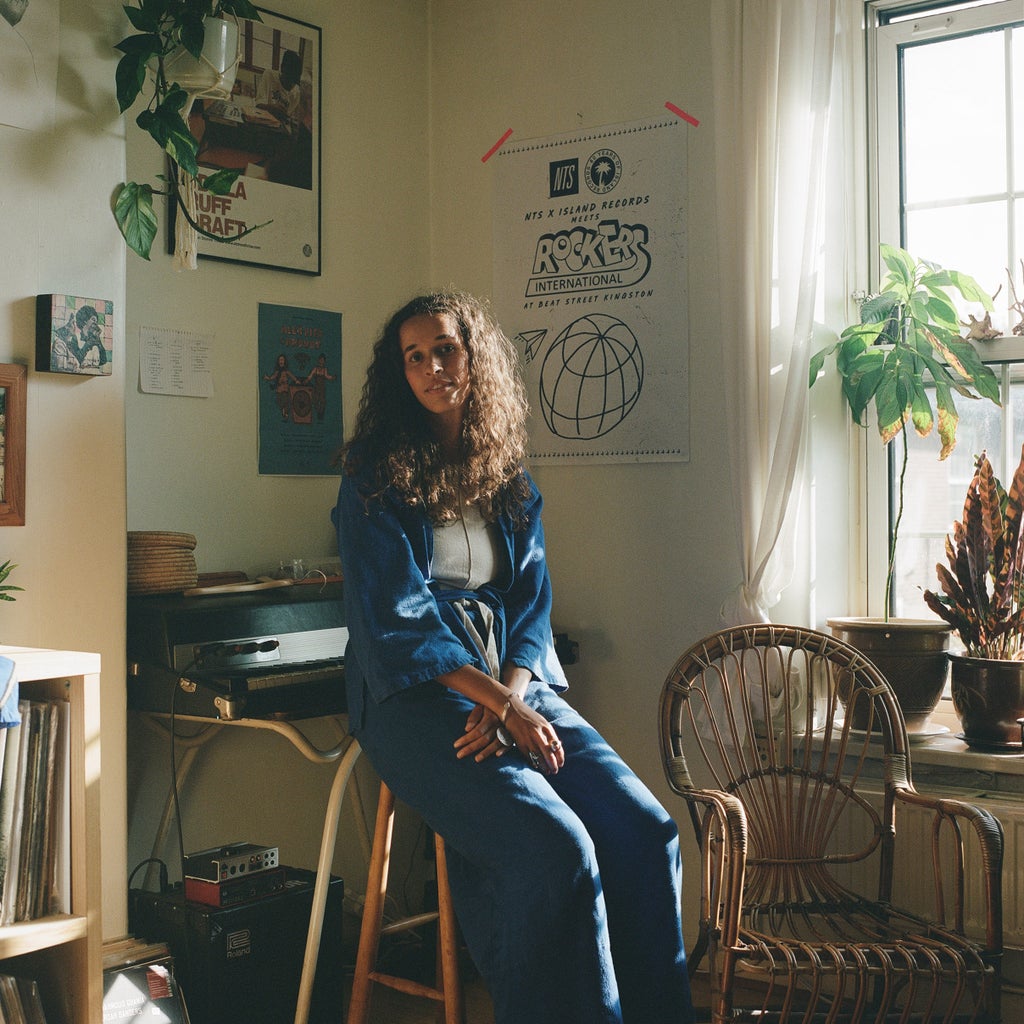
Alex Rita
“I did a bit of sewing in school but it wasn’t something I took home. Growing up, my mom was always into flea markets and would teach me about good quality fabrics. For a while after I had moved to London from Copenhagen, I was super broke. Like many others, I didn’t have much spare money after my rent was paid. I live next to Deptford Market and I picked up lots of affordable secondhand pieces that I would then cut up, take apart and adjust to fit me, because I’m 5’11. The pieces were like £3, it didn’t matter if I messed up. I started off by hand-stitching, but now I have a non-fancy Janome sewing machine. The first time I made something properly was when I was going to my ex’s brother’s wedding. My auntie is a wedding gown maker so I spent two weeks going back and forth to her house, learning how to make a dress. I learned a lot, just basic things I didn’t know before.
After that, I just started copying the style of pieces I already liked. I’m a very visual person so I just laid them flat and worked out the shape from there. It clicked for me when I thought, Oh, this T-shirt is just four squares put together. Anyone can do it. I think if people realized how simple it can be, they’d be less intimidated. I’ve been interested in very simple kimono silhouettes for some time and Japanese pieces are really simple to make, so that’s a good place to start. Maybe it’s the Scandinavian in me but Danish culture is all about quality. I don’t shop a lot. As I’ve gotten older, I’ve become more aware of my energy and space, and going into a shop in central London is so daunting, I just can’t. When a friend buys something made of polyester, you can feel how poor quality it is.
Growing up in Denmark, we didn’t have dollar stores or anything like that so I’ve always been an advocate for quality. I like one-of-a-kind things, too, so going into a shop and seeing 15 of the same dress just makes me sad. I only want clothes on my rail that I want to wear every day. When you change your perspective on clothes, you notice other areas, too. I don’t really eat meat anymore and when I do, it’s organic. You can buy a £2 chicken in the supermarket but it’s cheap because it hasn’t been cared for. A £10 chicken is really the price we should pay for a living, breathing animal which hasn’t just sat in a cage. We’re fed such a false idea of what things should cost.
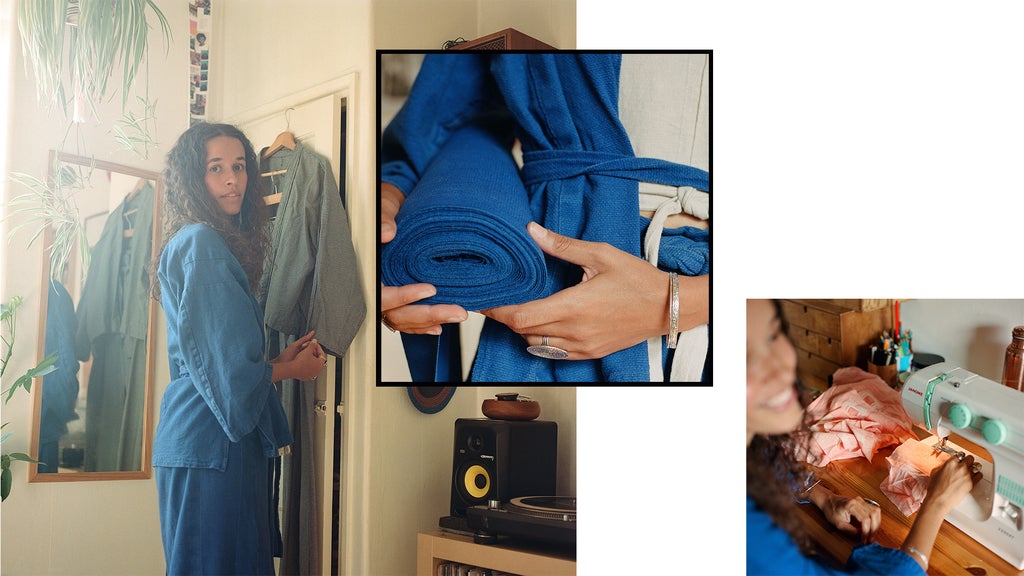
Instagram is amazing in terms of inspiration. Once in a while, I’ll see an advert for something that’s £200 and I’ll think, Ooooh, and try and make it myself. Now I only buy things I can’t make myself. I can’t knit, which I find very upsetting! I don’t have the patience so I buy woolen jumpers, and shoes. In the beginning, I didn’t put things on Instagram – it was just something to do for myself – but then people started to ask where I got things from. It seemed like people could maybe be inspired by it so that’s why I started sharing it. I think it’s important to show the process, too – social media is often fake and picture-perfect, and I want to show the reality of things. Photos with captions like ‘I just bought this £5 fabric’ then pictures of me cutting it. When people see that, they might think, I can do this too. I’ve been sent a few photos by other women who have made things after they saw my posts and that fills me with so much joy.
If you’re getting started, the main thing is setting aside time – you can’t underestimate that. London is so diverse and every borough has a brilliant market where you can buy affordable fabric. I use old bedsheets, curtains and throws to make most of my pieces, because they’re made from cotton and thick wool and are built to last. Community is so important, too. In Deptford there’s a stall run by an older couple who collect scrap materials from different places which I love buying from. Also, I make stage outfits for my friend who is a musician and she’s teaching me to sing! Exchanging skills is really underrated. Living in London, everything is frantic and fast, but we should make time for these things. Sewing is so therapeutic, just the sound of the needle bobbing away. We’re always looking at screens but when I’m sewing, I’m meditating.”
Like what you see? How about some more R29 goodness, right here?
#JacquemusAtHome Is The Best Thing On Social Media
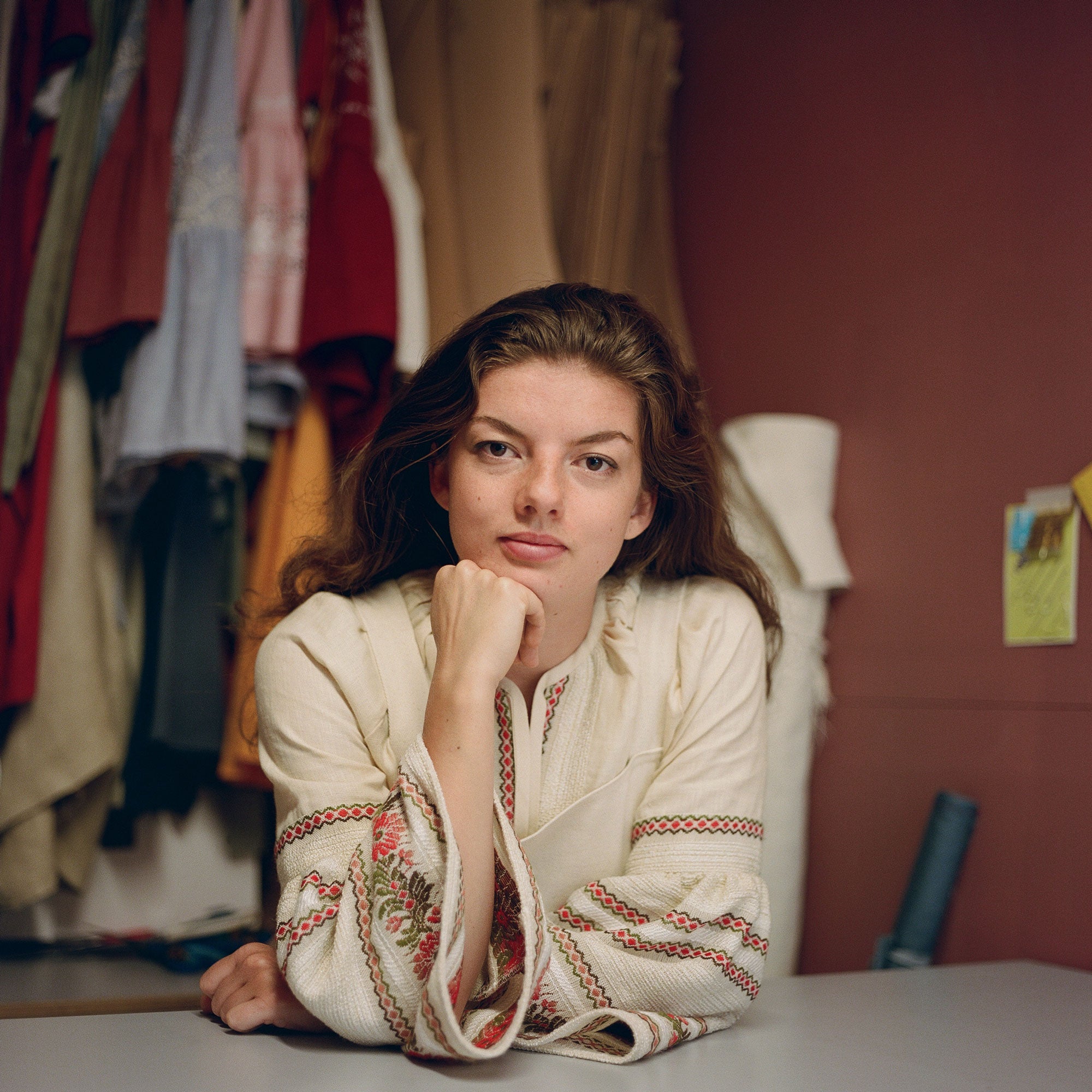
Before the boom of ready-to-wear fashion, every piece of clothing someone owned was made for the individual, either themselves or by someone they knew. Now, around 30 years after fast fashion began taking hold, we don’t know who delivered our dress to store, let alone who made it. The facelessness of this model allows us to brush aside our concern over the ethics of the production line – out of sight, out of mind! – while the merry-go-round of trends combined with the addictive serotonin hit of social media has us trapped in a never-ending cycle of buying more, quickly, now.
Purchasing a new-season piece is as easy as click-click-checkout – enabled further by next-day delivery – but a growing number of women are rallying against this dehumanized and detached fashion model. These women have learned to make their own clothes, and in doing so, have altered their perspective on everything from the importance of community to the tricks of advertising campaigns. Digital magazine service Readly revealed that out of 5,000 titles, with more than 83 million issues read globally in 2019, the most-searched-for topic was needlework craft, with knitting, crochet, and sewing also being featured in the top five trends.
While we should be wary of the jingoistic ‘make do and mend‘ mentality, which often overlooks the complex psychological impact of platforms like Instagram, as well as the economic and time privileges that sustainable fashion demands, young women are clearly turning to traditional craft as an antidote to fashion’s current, highly problematic state. With an upswing in the popularity of buying and tailoring vintage, and Pinterest reporting a 30% rise in searches for ‘how to make clothes’, it’s apparent that a DIY ethos is back en vogue. Equal parts mindfulness, activism, and creativity, it’s joyful resistance and sartorial originality all rolled into one.
Three women who make their own clothes invited us into their workspaces to discuss getting started (hint: baby steps!), the best fabric markets, and how, once you start sewing, your relationship with fashion changes forever.
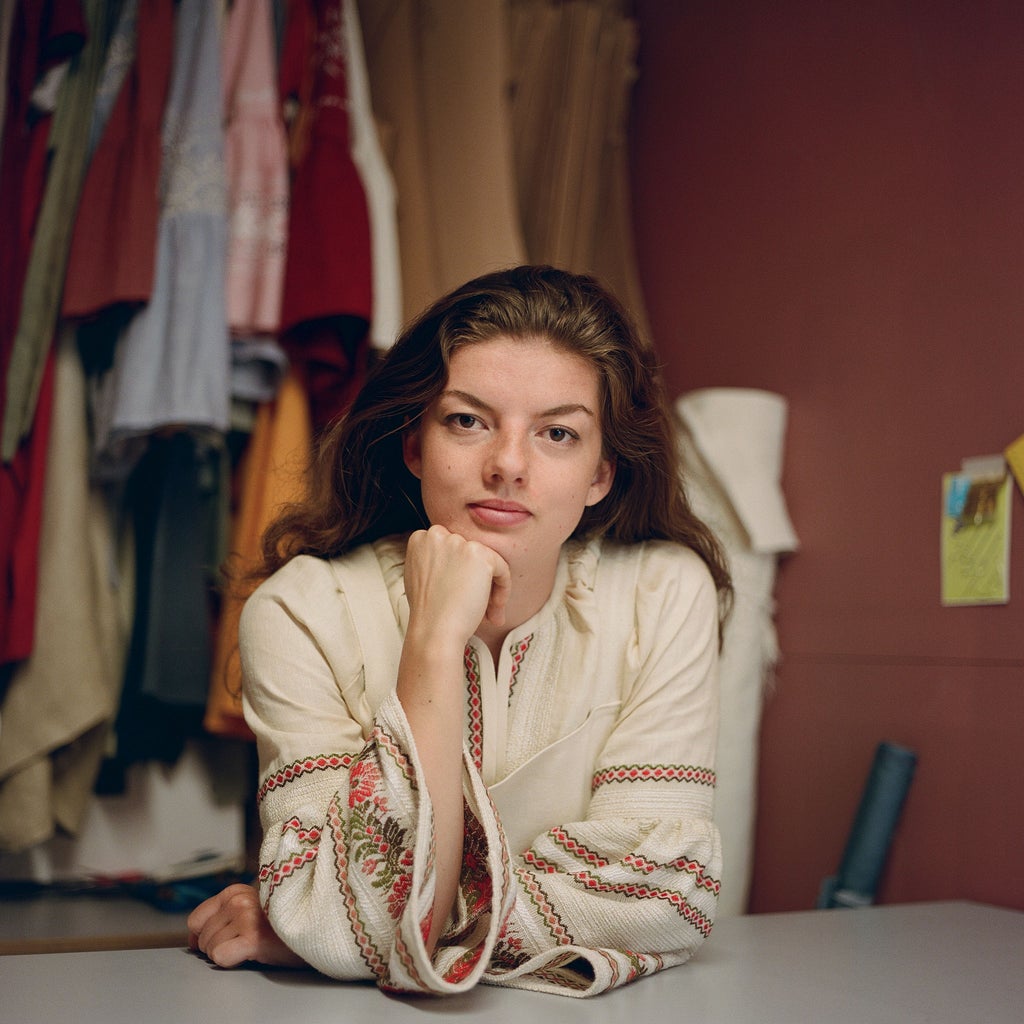
Lydia Higginson
“My mum taught me to sew when I was a little girl but I used to get frustrated with her because I wanted to make all these elaborate things and she’d say: ‘No, we’re going to start from the beginning.’ She made our clothes when we were small, but I’m the youngest of five, so by the time she got to me she was pretty busy. I learned the basics from Mom, but instead of pursuing a degree in textiles, I studied politics, but realized pretty quickly I’d never want to work in that world. I had bad depression and anxiety, and that was when I really got into sewing – I’d lock myself away for hours on end and it really calmed my mind.
One day I was looking through the window of Prangsta Costumiers in south London and the manager at the time asked if I wanted to come in. She was lovely, so I applied for an apprenticeship there. She started me on a week’s internship and it turned into two years. It was a baptism of fire because they were known for their really complex commissions, from huge showgirl headdresses with feathers to corsets and top hats. I learned to make men’s shirts, create embellishments and embroidery, and how to put a costume together. Learning to dress someone is an art form.
After the apprenticeship finished, I moved from London to Bristol to freelance as a costume designer. I landed on my feet when I found an amazing studio called the Bristol Textile Quarter: 10 fashion and textile artists working together in one big room, sharing industrial machines and cutting tables. I realized that there was a real disconnect between what I did for a living and the way I dress myself; I was making clothes for other people but still wearing leggings from the high street. I didn’t feel good wearing these clothes or going into these shops, so I decided to make my entire wardrobe with the shortest supply chain in the world – made and worn by me!
I started on 1st January 2016 and to stop myself breaking my New Year’s resolution, I created my blog, Made My Wardrobe, as a declaration. I began with a bra and pants because that’s the first thing you put on in the morning. They weren’t perfect but they were beautiful in their own way. Next was a coat, then trousers and a jumper and shirt, and so on. In the first month, I’d made a complete outfit. I wasn’t regimented, I just did what I could in evenings and weekends between work. I gradually gave away the high street clothes I had until December 31st, when everything went to the charity shop and I had made 75 of my own pieces. Since then, I’ve only made things I need – like a bikini for a holiday or a dress for a wedding – as I don’t like to make things for the sake of it. What’s cool is that when the seasons change, I can make adjustments to what I already have, like taking sleeves off in summer and putting them back on in winter.
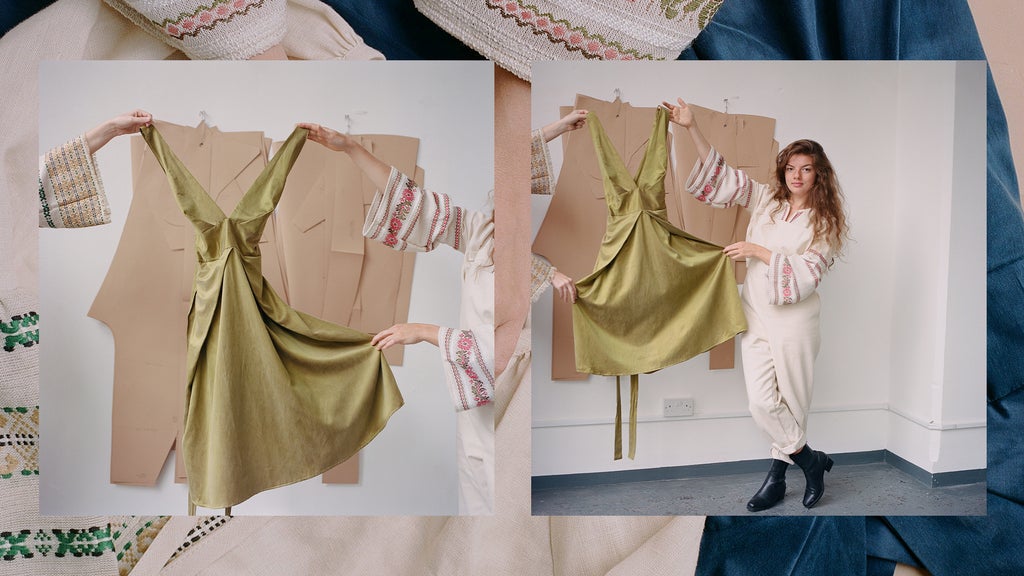
When you have a better understanding of how the things you own are made, you have so much more respect for them. Even if you only make one pair of jeans, the next time you go to buy a pair you’ll think so much harder about the work and care that went into that product. My studio is a stone’s throw from Oxford Street and knowing I don’t need anything from there is really liberating. It’s made me look at other areas of my life, too: can I build my own bed? My own kitchen table? Being self-sufficient is a really good feeling.
I’ve also gained a sense of community from this. I learned so many of my skills from other people, like swimwear from Claire Stidston and shoemaking from Lucy and Olly from Ottowin. That’s the part that most excites me – skill sharing – and I never want to lose that. Since finishing the year of making my own wardrobe, so many people got in touch saying they wanted to learn to make pieces, so I’ve been running workshops for the last three years. I now sell digitized patterns and run online workshops so that people can make the pieces using locally sourced fabrics. There’s an amazing project, Fibershed, which is all about closed-loop fabric production; another, Bristol Cloth, sells wool from local sheep which is botanically dyed by a local micro-mill, so I can make a coat out of this beautiful fabric that’s only traveled two hours by train.
I struggle with the knowledge that privilege plays a part in making clothes but as an artist living and working in London, I can’t make my workshops any cheaper. I do a lot of work with charities, from Tender, an arts charity which aims to end sexual abuse, and Fine Cell Work, which teaches the incarcerated fine needlework, to Off The Record, a mental health youth charity. For those who have never made anything before but want to get started, I’d begin with borrowing a sewing machine, buying a pattern and some cheap fabric and getting stuck in. If you ask around, I guarantee someone’s mum or auntie will have a sewing machine in their loft and as they range from £100 to £1,000, you want to go secondhand first. If you’re in London, my go-to is an amazing guy called Tony in Tufnell Park who has an incredible secondhand sewing machine shop. I am scared for when he retires because he services all my machines – he’s so knowledgeable and kind.
For fabric, Goldhawk Road market and MacCulloch & Wallis on Poland Street are great, and online I like Offset Warehouse. You’ll make mistakes along the way but you can’t go that wrong – at most, you’ll have to unpick it while sitting in front of Netflix! Patterns from my favorite indie brands cost between £10 and £15 but then you’ve got the pattern to make not only yourself a pair of overalls but your best friend, your mom, your sister… And once you’re proficient, you can hack the pattern to make overall dresses or trousers. In nearly every workshop I run, someone tells me about a textiles teacher who killed their confidence but I say anyone and everyone can do it.”

Atia Azmi
“My mom made our clothes for special occasions; I’m one of four and she’d use the same fabric to make different styles for us all. My dad also worked in the garment industry in Manchester and had his own knitwear business so seeing people sewing was totally normal for us, but I never learned to sew from my parents. I enjoyed cross-stitch and embroidery from age 8 or 9, and I did textiles at GCSE, but I didn’t pick it up again until after university, where I trained to be a GP. After I finished my initial junior doctor hospital training, I thought I’d like to sew again and began mostly making small quilts – I got very into knitting – and from there I decided to learn more about making my own clothes.
As a junior doctor doing shift work, I actually had lots of time – work is either completely full-on or you have a whole day free after a night shift. The freedom and creativity I got from sewing was such a nice change from the way I worked in medicine, where there’s very much a right and wrong answer. I developed skills that I couldn’t have done now that I have children. I always tell people who are trying to learn when they have kids or a full-time job that you can’t expect to suddenly know everything – it takes time. It can be frustrating when you feel you can’t find the time but I realized that you’ll never find the time if you keep saying: ‘I’ll get everything else in life done first, then I’ll start.’
Now, our conservatory is my sewing room. One thing you don’t realize when you start out is how much you’ll accumulate! For material, I love Simply Fabrics in Brixton, The New Craft House, and Fabworks. How much I make varies; last year on average I made something new every week. A complex piece like a coat would take several [weeks]but I could make two or three skirts or tops a week. At this stage, I’m conscious if I don’t need anything so I’m more focused on new skills I want to learn or something that’s more creatively inspiring, like using new fabric. I’d say two-thirds of my wardrobe are things I’ve made; it feels strange to wear something I haven’t now. I really enjoy making things for my daughter, and from a sustainability aspect, children’s clothes tend to be poorly made and in bad materials.

Making my own clothes has changed how I view fashion. When I go to the high street, all I can see is that there are too many clothes – such huge numbers, it’s quite overwhelming. All of those pieces have been made by somebody and will probably only be worn a handful of times. Once you know firsthand all the time that went into that garment, how long you’ll wear it for becomes so important. I spend so much less on clothes now; when I do buy something it’s only occasionally and I can afford for it to be different or special, which is nice. Because I’m a Muslim woman who wears hijabs, a lot of people assume that I sew because I can’t find what I want to wear. While that is not the case – there are lots of options for modest dressing – I do sew because I can’t find what I want to wear, but only because I’m petite and love Scandinavian style. You can’t always find those pieces in small sizes so I make clothes that are tailored to my preferences.
I’d advise people starting out to just build it into your day; maybe cut out your pattern one day, then thread your machine the next. Eventually, you’ll get to the point where you can finish a garment in a week or two, small steps at a time. Start off simple. Instagram is great for challenges to help with this – I used to do one called Kids Clothes Week, where you spend 30 minutes a day making something, and the community aspect really motivated me. There are YouTube tutorials on everything from how to put in zips to using particular sewing machines, and tags on Instagram like #beginnersewing or #indiepatterns are great for contacting people who are working on the same pieces as you, who managed to solve a problem you’re stuck on. Because you sew alone, it’s easy to feel isolated and get stuck on something but there really is a whole community out there.”

Alex Rita
“I did a bit of sewing in school but it wasn’t something I took home. Growing up, my mom was always into flea markets and would teach me about good quality fabrics. For a while after I had moved to London from Copenhagen, I was super broke. Like many others, I didn’t have much spare money after my rent was paid. I live next to Deptford Market and I picked up lots of affordable secondhand pieces that I would then cut up, take apart and adjust to fit me, because I’m 5’11. The pieces were like £3, it didn’t matter if I messed up. I started off by hand-stitching, but now I have a non-fancy Janome sewing machine. The first time I made something properly was when I was going to my ex’s brother’s wedding. My auntie is a wedding gown maker so I spent two weeks going back and forth to her house, learning how to make a dress. I learned a lot, just basic things I didn’t know before.
After that, I just started copying the style of pieces I already liked. I’m a very visual person so I just laid them flat and worked out the shape from there. It clicked for me when I thought, Oh, this T-shirt is just four squares put together. Anyone can do it. I think if people realized how simple it can be, they’d be less intimidated. I’ve been interested in very simple kimono silhouettes for some time and Japanese pieces are really simple to make, so that’s a good place to start. Maybe it’s the Scandinavian in me but Danish culture is all about quality. I don’t shop a lot. As I’ve gotten older, I’ve become more aware of my energy and space, and going into a shop in central London is so daunting, I just can’t. When a friend buys something made of polyester, you can feel how poor quality it is.
Growing up in Denmark, we didn’t have dollar stores or anything like that so I’ve always been an advocate for quality. I like one-of-a-kind things, too, so going into a shop and seeing 15 of the same dress just makes me sad. I only want clothes on my rail that I want to wear every day. When you change your perspective on clothes, you notice other areas, too. I don’t really eat meat anymore and when I do, it’s organic. You can buy a £2 chicken in the supermarket but it’s cheap because it hasn’t been cared for. A £10 chicken is really the price we should pay for a living, breathing animal which hasn’t just sat in a cage. We’re fed such a false idea of what things should cost.
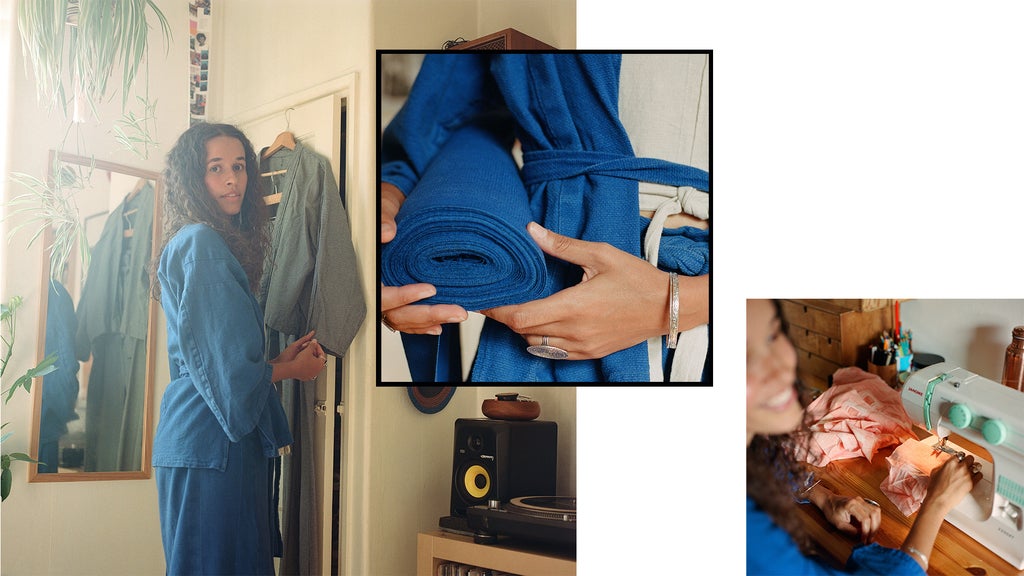
Instagram is amazing in terms of inspiration. Once in a while, I’ll see an advert for something that’s £200 and I’ll think, Ooooh, and try and make it myself. Now I only buy things I can’t make myself. I can’t knit, which I find very upsetting! I don’t have the patience so I buy woolen jumpers, and shoes. In the beginning, I didn’t put things on Instagram – it was just something to do for myself – but then people started to ask where I got things from. It seemed like people could maybe be inspired by it so that’s why I started sharing it. I think it’s important to show the process, too – social media is often fake and picture-perfect, and I want to show the reality of things. Photos with captions like ‘I just bought this £5 fabric’ then pictures of me cutting it. When people see that, they might think, I can do this too. I’ve been sent a few photos by other women who have made things after they saw my posts and that fills me with so much joy.
If you’re getting started, the main thing is setting aside time – you can’t underestimate that. London is so diverse and every borough has a brilliant market where you can buy affordable fabric. I use old bedsheets, curtains and throws to make most of my pieces, because they’re made from cotton and thick wool and are built to last. Community is so important, too. In Deptford there’s a stall run by an older couple who collect scrap materials from different places which I love buying from. Also, I make stage outfits for my friend who is a musician and she’s teaching me to sing! Exchanging skills is really underrated. Living in London, everything is frantic and fast, but we should make time for these things. Sewing is so therapeutic, just the sound of the needle bobbing away. We’re always looking at screens but when I’m sewing, I’m meditating.”
Like what you see? How about some more R29 goodness, right here?
#JacquemusAtHome Is The Best Thing On Social Media


